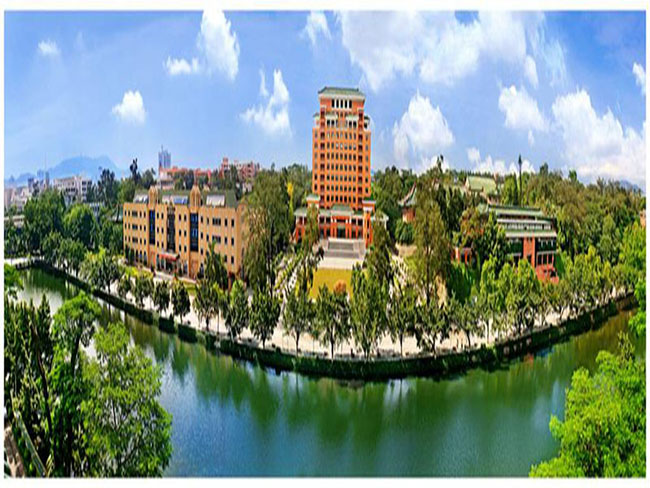
INTRODUCTION
The University of South China is a university in Hengyang, Hunan province, China. It was formed in 2000 by the merger of Central South Institute of Technology (est. 1959) and Hengyang Medical College (est. 1958). The University of South China, with a nationwide enrolment, is administered by the Hunan Provincial Government, and co-funded by the Commission for Science, Technology and Industry for National Defense (COSTIND) and a few other ministries of the central government. In October 2002, University of South China incorporated the Sixth Institute of National Nuclear Industry as its subordinating part and took over No. 415 Hospital (originally under the Corporation of National Nuclear Industry) as one of its affiliated hospitals. In July 2004, the Chinese People's Liberation Army (PLA) Navy set up a training base for its reservist officers in University of South China. The University of South China was initially authorized to award bachelor's degrees, and in 1986 began awarding master's degrees. In 1991, it began to collaborate with other universities and research institutes in doctoral programs, and was authorized to award doctoral degrees in 2003.
The university has 72 undergraduate majors, covering as many as 8 disciplinary areas (science, engineering, medicine, law, liberal arts, economics, management, and education). There are 6 provincial key disciplines, 5 disciplines administrated by the Chinese government, and 1 key discipline of national defense. 18 Programs are entitled to award Ph. D. degree, 124 MA or M.S. degrees, and 35 professional degrees. The mining engineering, nuclear technology and its application, pathology and pathological physiology, and pharmacology are Hunan provincial key construction disciplines. There are 2 ministerial key laboratories, i.e. the dissolution and mineral laboratory, the coordinating laboratory of the International Radon Calculation Program of IAEA in Asia, 1 provincial key laboratory, i.e. the radon laboratory.
Nuclear science, medical science and environment-related sciences are the three pillar stones of the university.
The university began its international student education in 2011, and there are now more than 50 students from 8 countries, most of them majoring in clinical medicine




